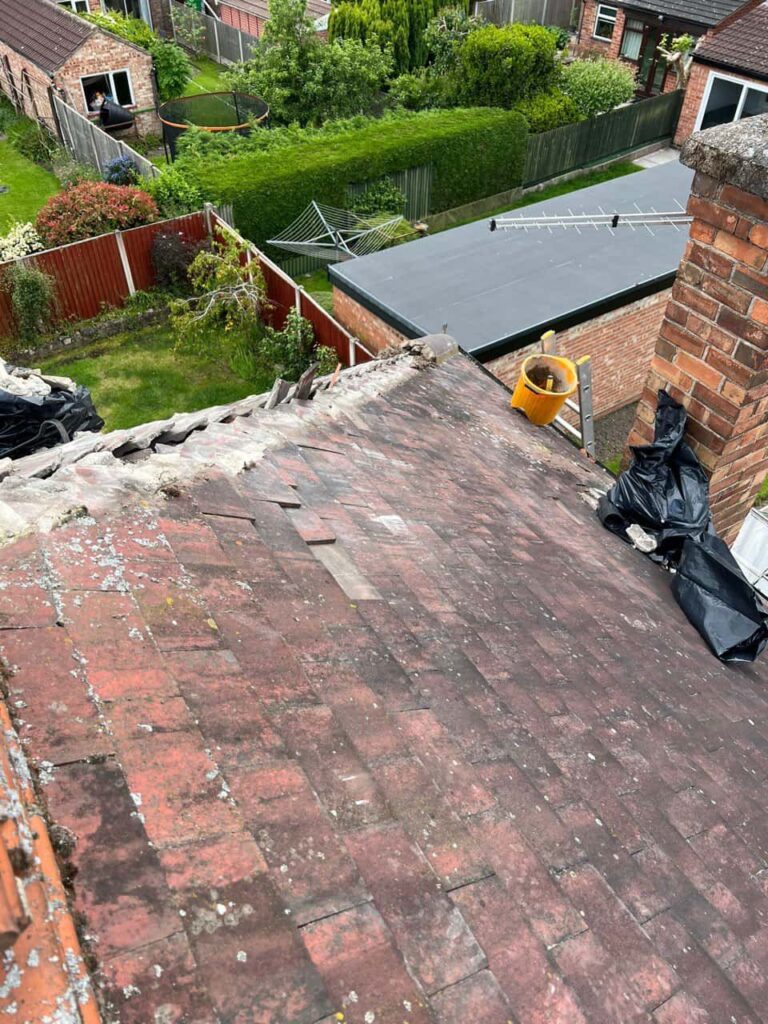Introduction: Maintaining the integrity of historic or listed buildings requires special considerations, particularly when addressing roof leaks. At Downham Market Roofing Repairs, we understand the unique challenges and importance of preserving the architectural heritage of such properties. This blog post explores effective strategies and considerations for tackling roof leaks in historic or listed buildings in the UK.
Understanding the Challenges
- Structural Complexity
- Unique Architecture: Historic buildings often feature intricate designs, steep pitches, and unconventional roof shapes, which can complicate leak detection and repair.
- Materials: Traditional roofing materials such as slate, clay tiles, or thatch require specialised knowledge and techniques for maintenance and repair.
- Preservation Requirements
- Listed Status: Listed buildings are protected by law to preserve their historic and architectural significance. Any alterations or repairs must comply with conservation guidelines.
- Conservation Officers: To obtain approval for repair methods and materials, consultation with conservation officers or heritage authorities may be necessary.
Strategies for Effective Leak Repair
- Thorough Inspection and Assessment
- Professional Evaluation: Engage experienced roofing professionals familiar with historic building requirements to conduct a comprehensive roof inspection.
- Identify Issues: Thoroughly document and identify areas of concern, including roof penetrations, flashing, and underlying structural issues contributing to leaks.
- Use of Traditional Materials
- Authenticity: Maintain the historic character of the building by using traditional roofing materials that match the original construction.
- Compatibility: Ensure new materials are compatible with existing roof structures and meet conservation standards for appearance and performance.
- Conservation-Friendly Repair Techniques
- Non-Invasive Approaches: Adopt non-invasive repair techniques to minimise disruption to historic fabric and maintain structural integrity.
- Reversible Repairs: Where possible, employ reversible repair methods that do not permanently alter original features and allow for future conservation needs.
- Waterproofing and Weatherproofing
- Enhanced Protection: Enhance waterproofing and weatherproofing measures to prevent future leaks, considering the building’s susceptibility to weather elements and age-related deterioration.
- Attention to Detail: Pay meticulous attention to details such as flashing installation, sealant application, and ventilation to ensure long-term protection against leaks.
Regulatory Compliance and Permissions
- Planning and Permissions
- Consent Requirements: Obtain necessary planning permissions and consents from local authorities or heritage bodies before commencing any repair work on listed buildings.
- Compliance: Ensure all repairs adhere to conservation principles, building regulations, and listed building consent conditions.
Expertise and Professional Support
- Heritage Roofing Specialists
- Specialised Knowledge: Engage roofing contractors with expertise in heritage buildings and listed properties, ensuring they understand the unique requirements and restrictions.
- Certifications: Look for contractors accredited by heritage organisations or recognised for their proficiency in historic building conservation.
Conclusion: Addressing roof leaks in historic or listed buildings demands careful planning, expertise in traditional craftsmanship, and adherence to conservation principles. At Downham Market Roofing Repairs, we are committed to preserving the historical integrity of your property while effectively resolving roof leaks. Whether you require inspection, maintenance, or restoration services, our dedicated team is here to provide tailored solutions that safeguard your building’s heritage.
Call us on: 01366 310 681
Click here to find out more about Downham Market Roofing Repairs
Click here to complete our contact form and see how we can help you with your roofing needs.

